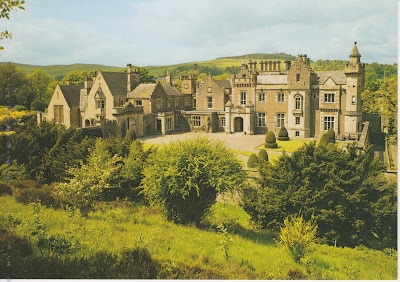Powder Box Church, Jerome, Arizona, ca 1985
[photo: Rollie Houck]
Sabino Gonzales built the Powder Box Church in Jerome, Arizona between 1939 and 1941. Rollie Houck took the photograph on the postcard distributed by Burnmeister Enterprises of Prescott, Arizona. The card has ICS-108457 on the reverse at the bottom center. December 18, 1985 has been inked in at the lower left corner on the reverse; however, the card does not have a message or stamp. There is a short blub at the upper right on the reverse of the card explaining how the church was built.
Mining of copper, gold, silver and other metals in the late 19th century was the main reason for development of Jerome. When the ore deposits dwindled the population also dropped. Tourism and retail sales saved the town from completely shutting down. It became a National Historic Landmark in 1967. Many of the mineworkers were Mexican. At that time Mexicans were not permitted to enter Anglo churches so Sabino Gonzales built a church for them using stucco, wire mesh and disassembled blasting power boxes from the local mines.
The church has now become a private residence and can only be viewed from a distance. The back of the former church can be seen from the front of the Douglas Mansion at Jerome Historic Park.
Rollie Houck owned and operated a camera shop in Sedona, Arizona beginning in 1961. The shop has been sold twice since he had it. He published several photo books with Arizona images. There is a plaque honoring him in the shop today.
For additional information, see:
https://en.wikipedia.org/wiki/Jerome_Arizona
http://www.city-data.com/articles/Powder-Box-Church-Jerome-AZ-a-church.html
https://www.tripadvisor.com/ShowUserReviews-g31253-d126887-r175504758-Powder_Box_Church-Jerome_Arizona.html
https://www.hmdb.org/marker.asp?marker=94834










